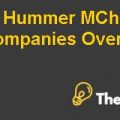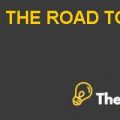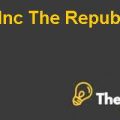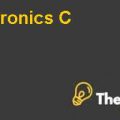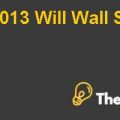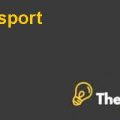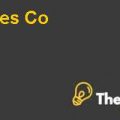Volkswagen Case Study Solution
Introduction
Volkswagen is one of the pioneer car manufacturers in Germany. The company started with the aim to offer luxury car to the market. In doing so, it developed several models of cars that cater the luxury target market.The company have further escalated the efficiency of its portfolio, by steadily growing its presence in all the key markets in the world and taking control of several renowned names like Bentley, Audi, Skoda, Bugatti, Porsche, SEAT, Lamborghini and Volkswagen marques. It has expanded to motorcycles division in Ducati brand and launched another commercial vehicle through Marques Scania, Van. Volkswagen further increased it presence by expanding its operations in 153 countries of the world commercial Vehicle. However, the strategy failed to inculcate the change in market and thus faced low sales.So in order to deal with the issue, the company developed the business strategy of developing Volkswagen “people’s car” with an aim to target middle-tier market with no effect on pricing strategy.In doing so, it developed multiple models under the same strategy.This allowed the company to develop strong market position and brand awareness with strong recognition in the customer mind.Also, the slogan “people cars” developed strong brand association leading to high sales.
The business model of the company outlines the unique characteristic of innovation, technology and customer trend in the product offerings.Over the period of time, the company has elevated its products and developed new products by inculcating technology and customer demand in mind by keeping the target market strategy uniform.It developed strong distribution channel and communication that allowed it to integrate the market trend effectively and precisely in product offerings.Innovation and dynamism is one of the key characteristics of Volkswagen business strategy.It incorporates the strategy of continual innovating the business operation so to penetratein German and other European markets effectively.
In the recent year, the company has recorded the revenue increase of 56.2 billion euros and has recorded a continuous increase in growth by 10.6% annually.This depicts the high market value and sales network of the company. Though in 2016, the company got surrounded by diesel scandal, and it effected its sales margins and sales quota for a particular period, however, it kept the revenues of the company sustainable in the particular period and the growth rate remained uniform at 10.6%.
Volkswagen is further gearing up to maximise its diversified vehicle portfolio, in 2017, by concentrating their resources towards expansion in emerging markets providing attractive returns. It can be said that Volkswagen is rebounding really well from the emission scandal that rocked the company in 2015.Volkswagen’s greatest strength currently is its diversified portfolio. Due to take over of several luxury cars like Audi, Bentley, SEAT, etc. Volkswagen have a cushion in the sense that it can depend on profits from one sector to cover up the losses occurring in another sector.
Financial Analysis
The company has improved its profitability over the year but at the cost of increasing its short-term liabilities. Even though its current assets have also risen, they have not increased by the same level as the current liabilities have increased. The company’s non-current assets have also not risen significantly but luckily neither have its equity. The company has shown growth in sales by 1.9% in 2016 to recover from losses incurred in 2015 leading to growth in both its gross and net profit margin.
The investors’ trust in the company can be said to be the biggest driving factor behind its success. With constant price to earnings ratio, the company have maintained its standings as one of the leading businesses in the industry.
Ratios Analysis
Liquidity Ratios
Effectiveness of liquidity pertains to the nature of industry in which a business is operating.Liquidity of the company has fallen as at the year-end 2016 both its quick ratio and current ratio have fallen. The main culprit behind this fall is rise in current liabilities with the greatest rise coming in creditors section (accounts payable). Liquidity ratios are used to measure the efficiency of the company to pay off its debt and the remaining available margin of safety for the company. Highly liquidate current assets excluding inventory and prepaid expense can be used to analyse and compare the options (assets) available to the company to overcome its liabilities in case of liquidation. A measure of 1 indicates that assets are on equal amount payable by the company and that company’s debt is operating on a break-even phenomenon.
Quick Ratio is expressed as percentage of the result of subtracting inventories and prepaid expenses from the current assets and dividing it by current liabilities. Quick ratio of the company has fallen from 0.74 in 2015 to 0.66 in 2016 indicating that fewer cash and cash equivalents of the company have fallen over the year. It can also indicate that current liabilities have risen.
Current ratio is calculated by dividing current assets of the company with its current liabilities. This indicates the company’s ability to manage its short-term debt and assets available to overcome short-term debt. Volkswagen’s current ratio has fallen to 0.88 in 2016 from 0.98 in 2015. This indicates that short-term liabilities of the company have risen or that company has fewer assets to overcome its short-term debts..............................
This is just a sample partial work. Please place the order on the website to get your own originally done case solution.


